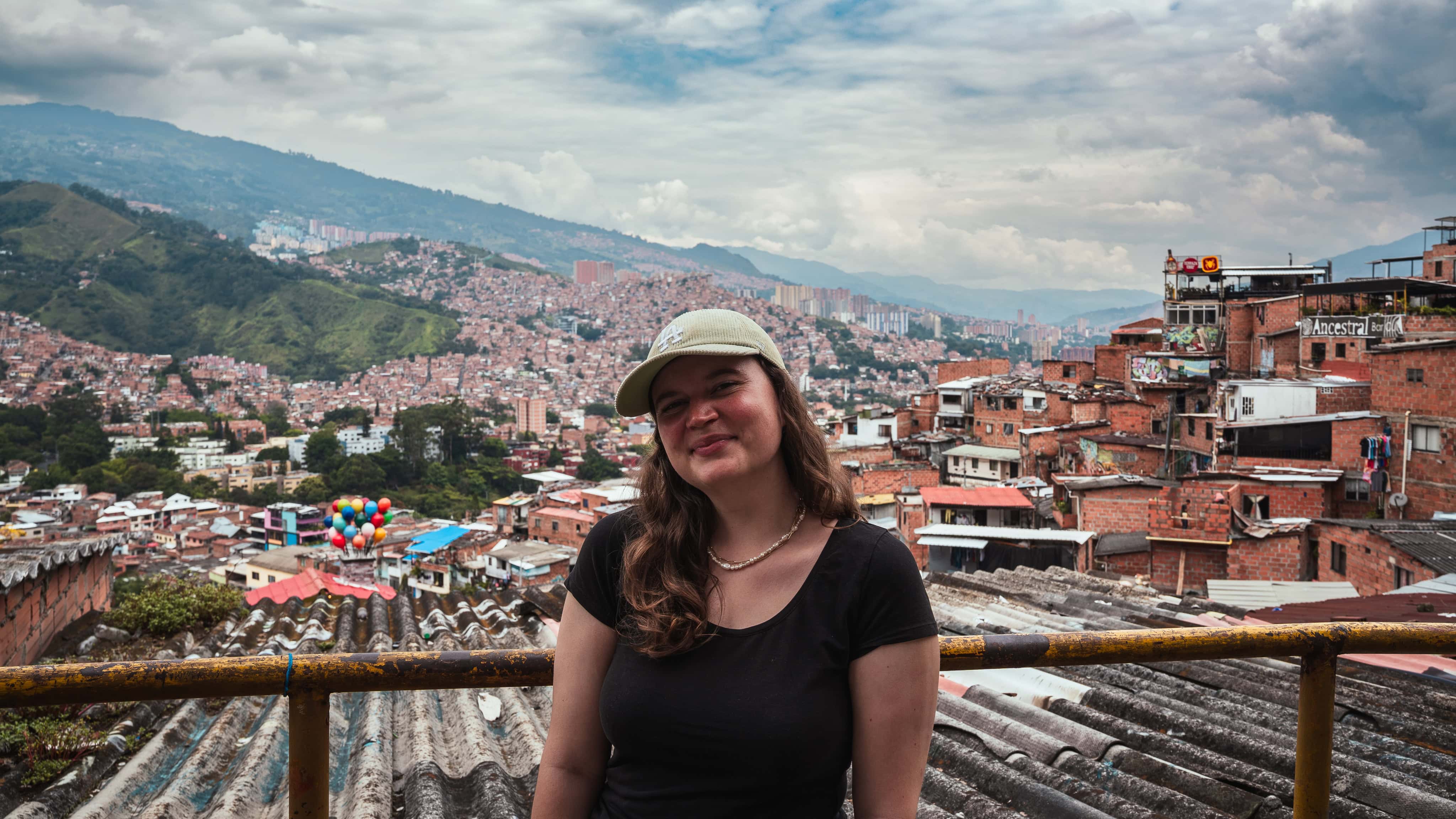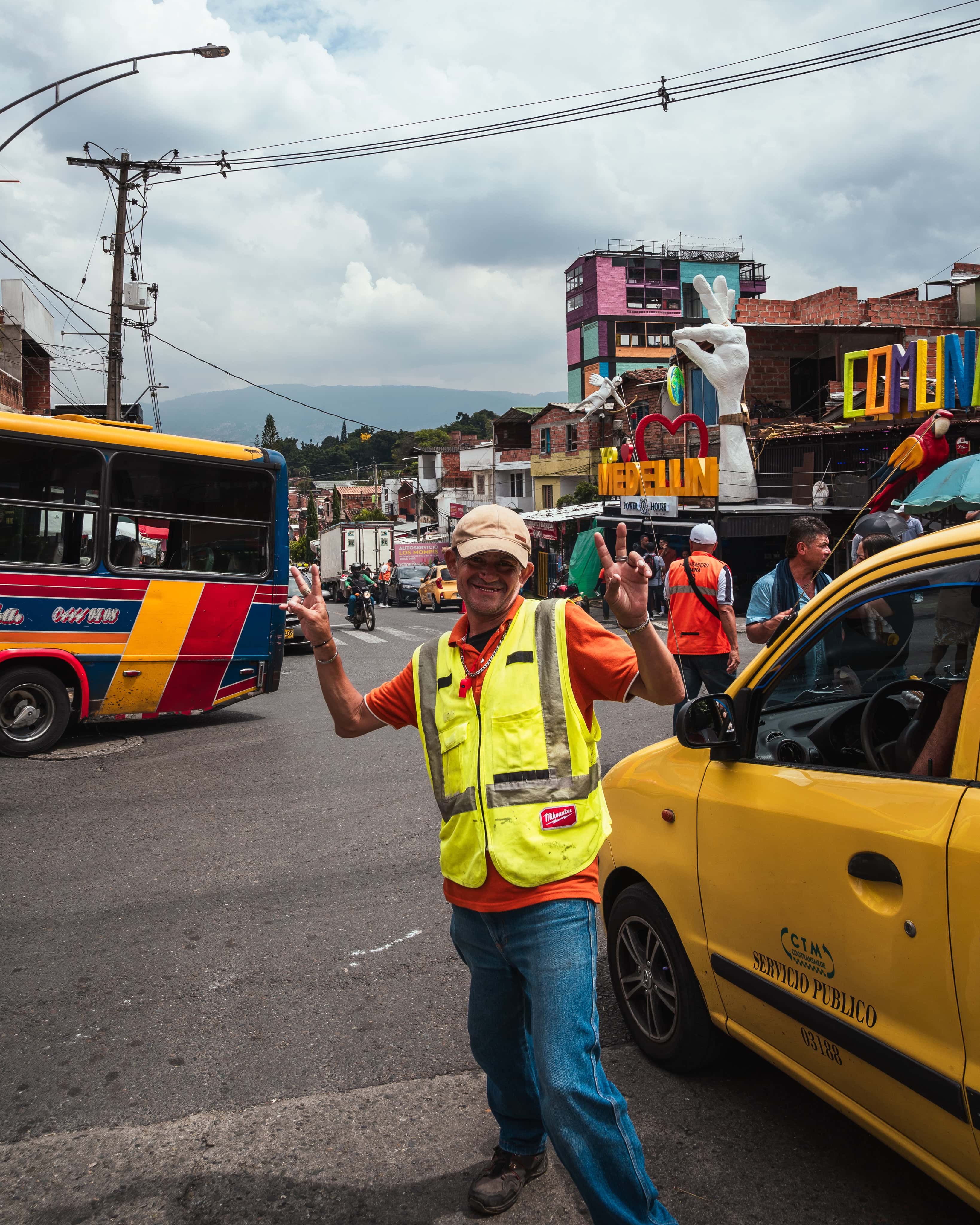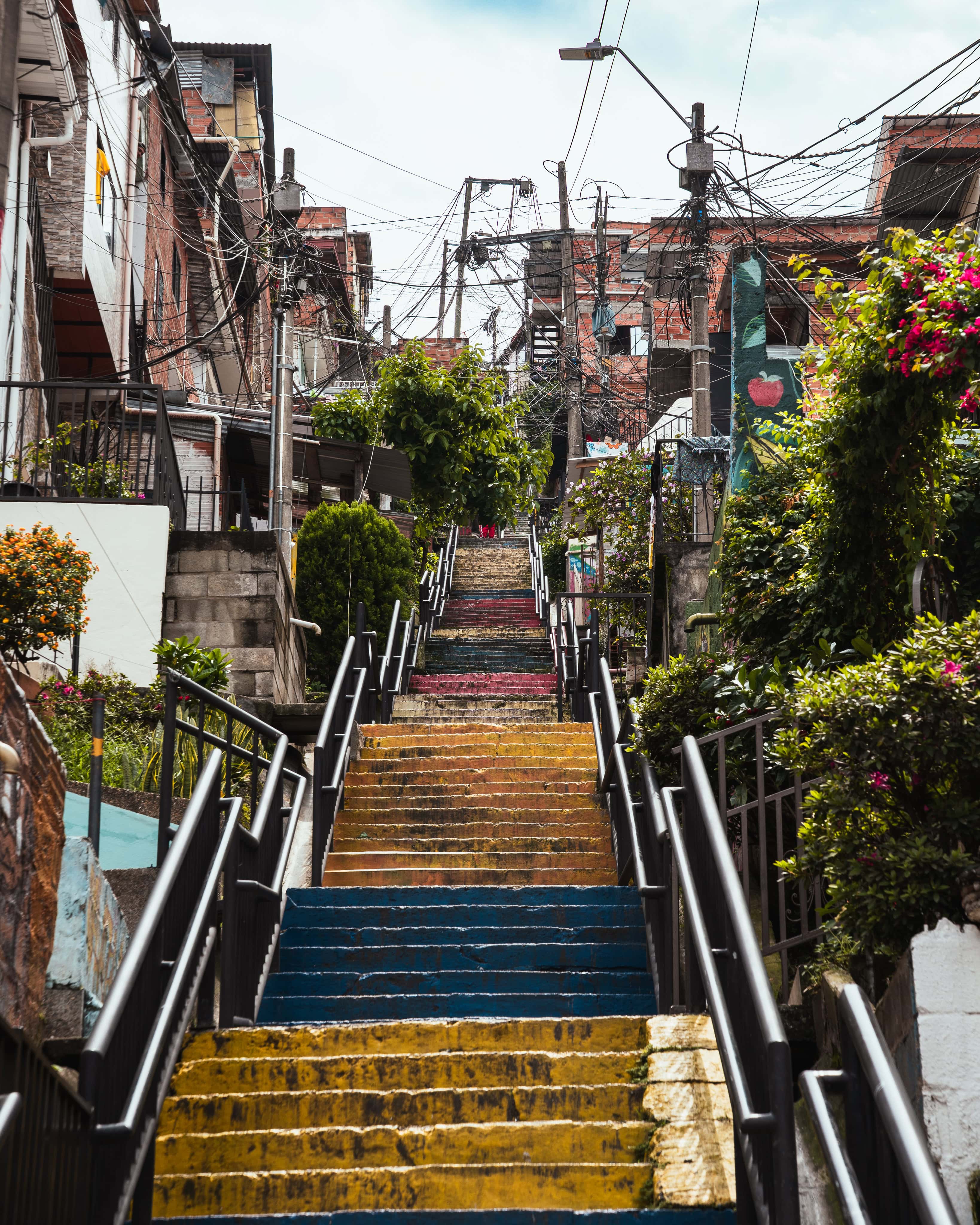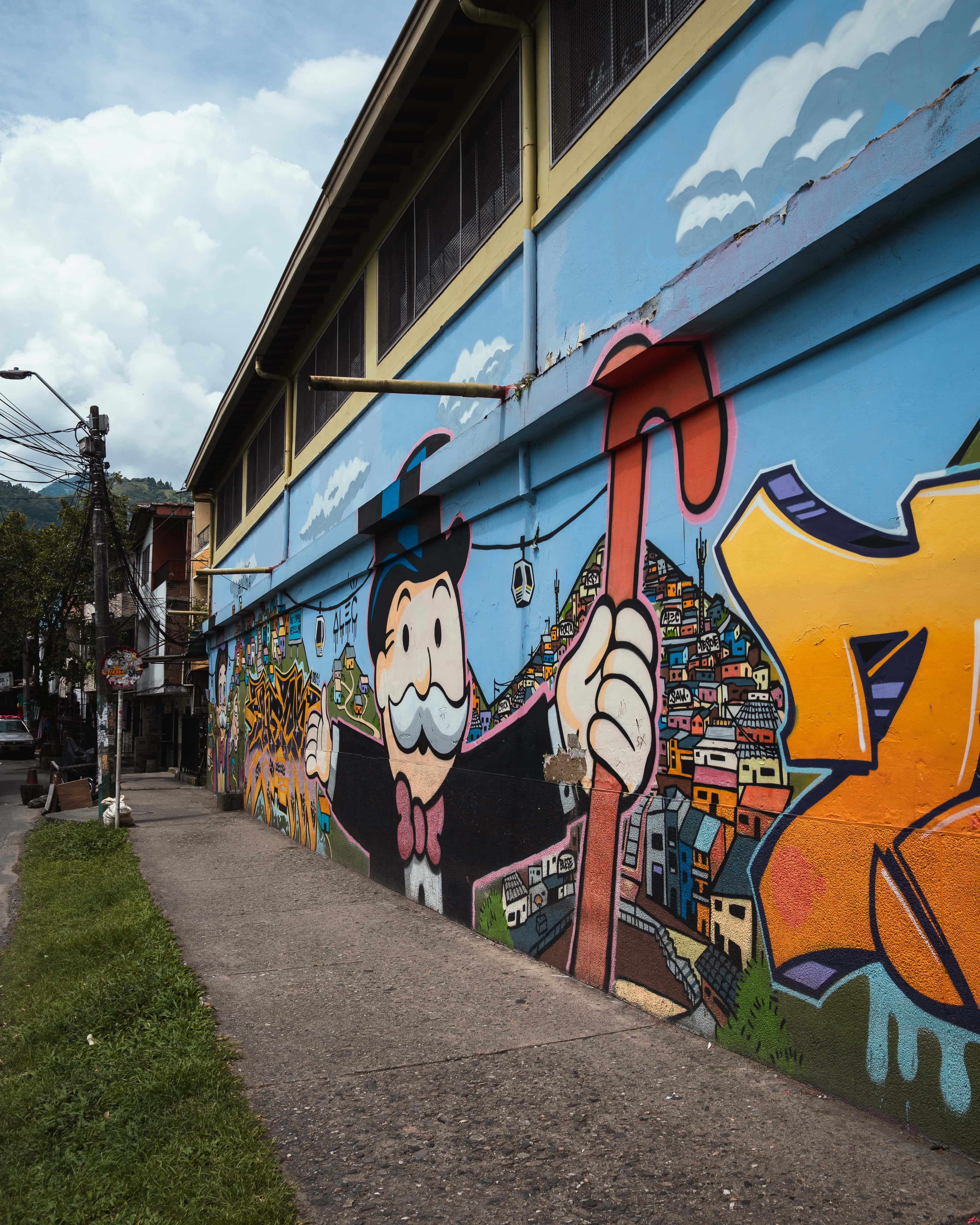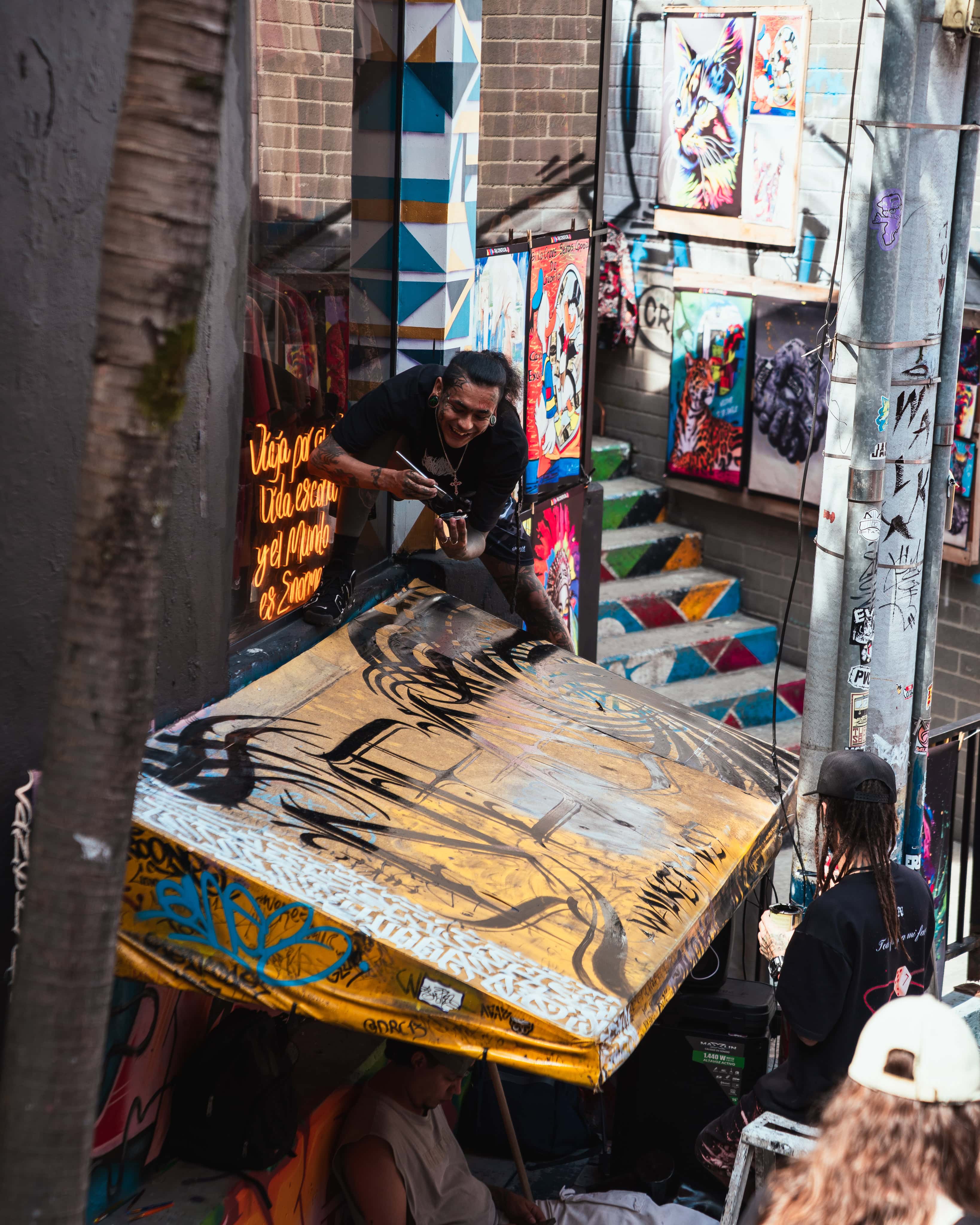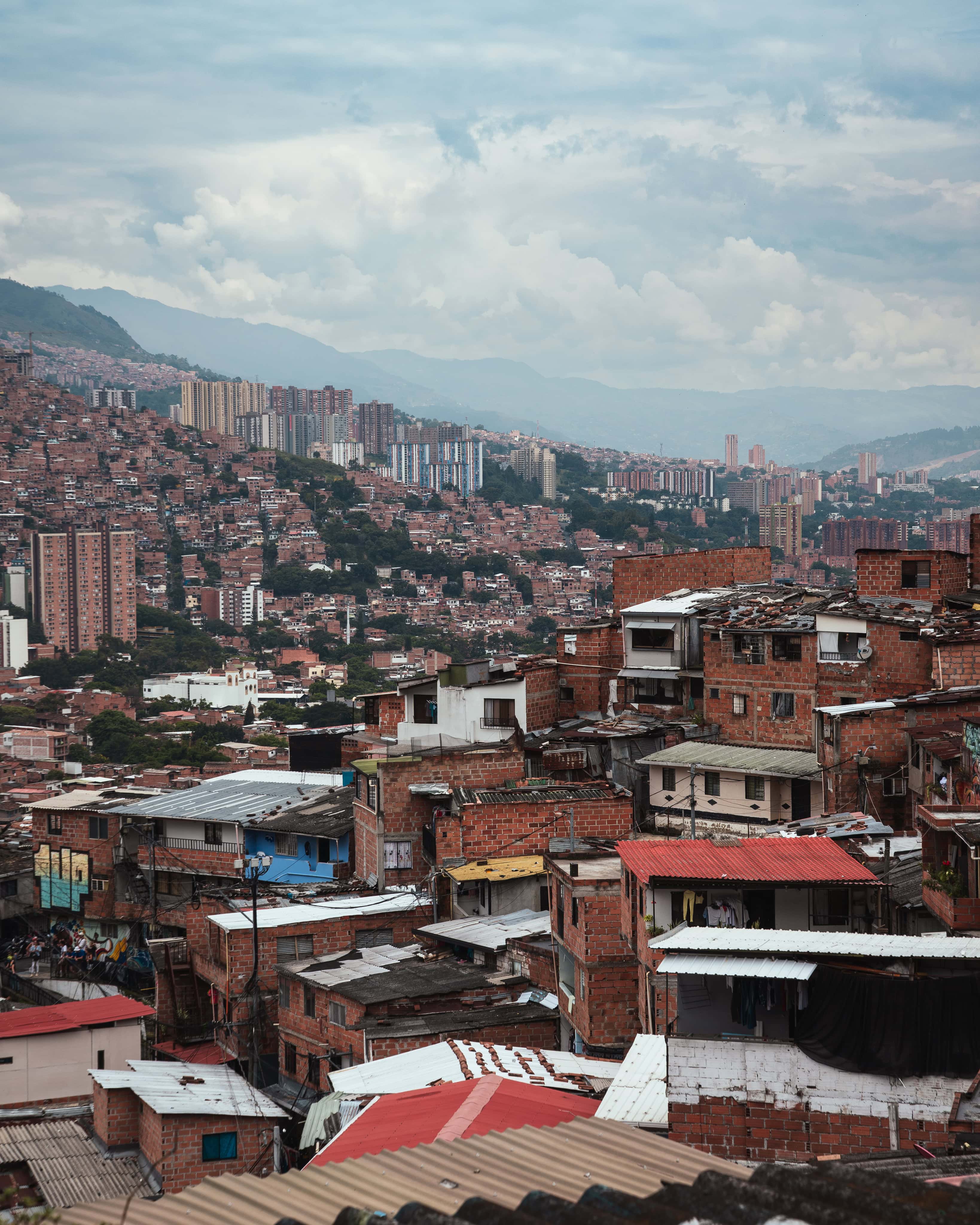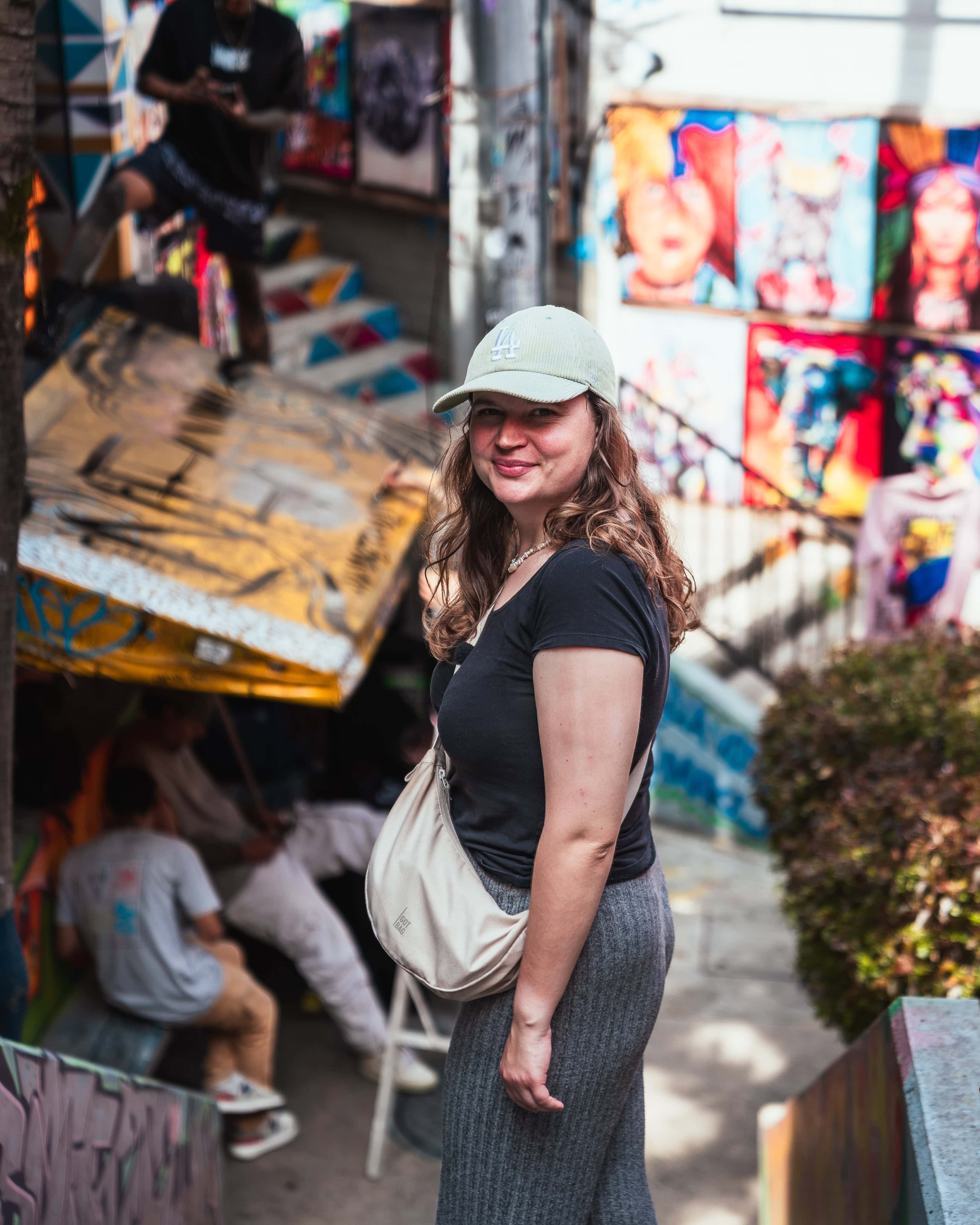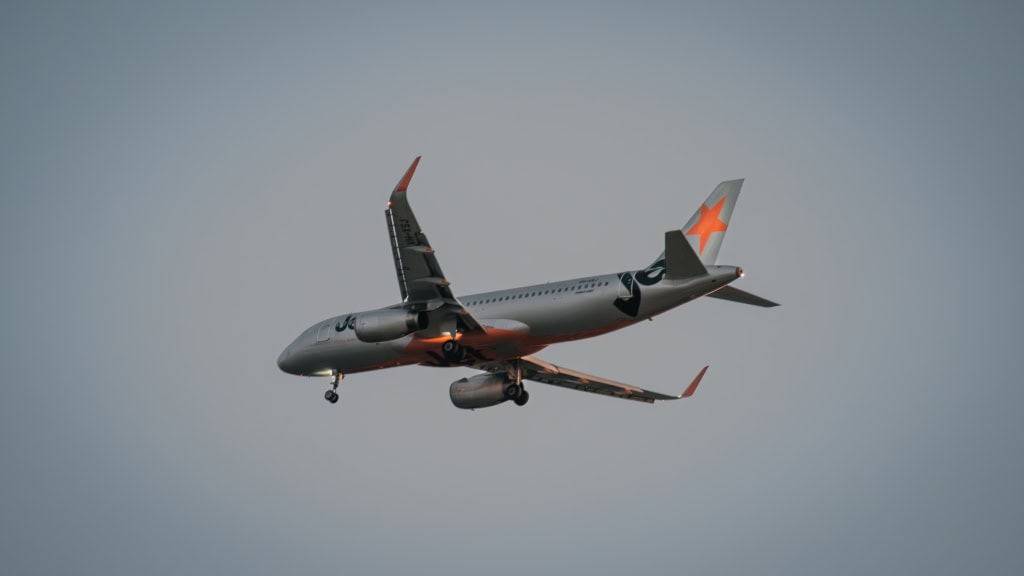Comuna 13 in Medellín is now one of the best-known examples of urban regeneration in Latin America. Where violence, poverty and fear once reigned, the area is now characterised by colourful street art, music and community projects. The neighbourhood’s history is marked by pain, resistance and hope, making Comuna 13 one of Colombia’s most fascinating places for travellers wanting to learn more about the country’s social and cultural transformation.
Location and accessibility
Officially part of the San Javier administrative district, Comuna 13 is located in the west of Medellín on the steep slopes of the Aburrá Gorge. The settlements extend up the hills in several small neighbourhoods. Narrow streets, stairs and footpaths connect these neighbourhoods to the urban infrastructure. The easiest way for visitors to get there is by metro to San Javier station. From there, visitors can either walk or take a bus to the base of the famous outdoor escalators and the graffiti district. The neighbourhood is involved in urban development projects that are improving mobility through Metrocable connections and public pathways.
Brief historical context
For decades, Comuna 13 was the scene of violent conflict, with rival armed groups, paramilitary gangs and criminal organisations shaping the daily lives of its residents. A defining event was Operación Orión on 16–17 October 2002: a large-scale military operation that established state control in the short term but resulted in numerous human rights violations, disappearances and expulsions. This led to serious allegations against state entities and paramilitary groups. Since then, families of victims in Medellín have been seeking justice and clarification. Among other things, they have pointed to mass graves in areas such as La Escombrera. The investigation and recognition of these crimes are still subjects of public discourse and legal proceedings.
Urban development, social investment and infrastructure projects
The visible transformation of Comuna 13 is no coincidence. In the 2000s and 2010s, investment focused on urban programmes (known as Proyectos Urbanos Integrales, or PUIs for short), particularly in terms of mobility, education, culture and public spaces. Of particular note are the electric outdoor escalators installed on the mountainside, inaugurated in 2011/12. These have made everyday life much easier for residents by replacing long, steep footpaths and reducing commuting times. These measures were supplemented by the expansion of the Metrocable lines, the construction of new footpaths and lighting, the building of schools and cultural centres, and the introduction of support programmes for local initiatives. This combination of technology, urban planning and community projects is often cited as an example of integrative urban planning. However, critics point to ongoing social problems and the risks of gentrification.
Cultural change, street art and community tourism
Artistic initiatives, graffiti projects and local cultural organisations have played a significant role in shaping Comuna 13’s positive image. Murals, paste-ups, photo projects and dance performances tell the stories of the residents, often focusing on memory, resistance and reconciliation. These initiatives have led to the establishment of professionally run graffiti tours, which are often led by local guides. The tours combine art education with eyewitness accounts. Visitors learn about the area’s political history, personal experiences and charitable initiatives, thereby directly supporting the local economy. However, there are also legitimate debates about how tourism is changing the community, with positive effects in terms of income but problematic effects when control over narratives and spaces passes to external actors.
Memory, human rights and current developments
Coming to terms with the past remains central. In recent years, investigations and discoveries, such as the finding of human remains at disposal sites like La Escombrera, have brought renewed attention to the crimes committed during military and paramilitary conflicts. Such discoveries hold great emotional significance for the families of the disappeared, and they call on state institutions and truth and justice mechanisms to clarify responsibilities and ensure that justice is served. This remains a sensitive and politically charged issue that is important for visitors to understand. Comuna 13 is not just an Instagram location; it is a living space with traumatic collective memories.
Our tour with Zippy Tours Medellín
Our guided tour with Zippy Tours began right at the San Javier metro station. There, we were warmly welcomed by our local guide. Right from the start, it was clear that he had deep roots in the Comuna himself.
As we walked uphill, we repeatedly stopped to hear stories and background information about the children and schools in the Comuna, local education projects, and how art, music, and sport are opening up new perspectives for young people today. The section about the former influence of the narcos and how residents today distance themselves from that era was particularly impressive.
Our guide vividly described how figures such as Pablo Escobar once symbolised false power and assistance, and how proud the people of the Comuna are today to be following their own honest path.
We continued up the escalators, passing bright murals, small cafés and viewpoints, until we finally reached the upper art district. There, we were greeted by an impressive panorama of Medellín, accompanied by breakdancing performances, music and street food. Everywhere, you could sense the pride and joie de vivre of the people.
What sets Zippy Tours apart is its personal touch: each stop was linked to authentic stories, and each mural came to life. It was not just a tourist attraction, but a vibrant encounter with a neighbourhood in transition. Incidentally, the tour is free of charge. However, it is customary and entirely appropriate to give around 10 US dollars as a token of appreciation!
For us, this was one of the most emotional experiences in Medellín – educational, moving and inspiring all at once.
Practical tips for visitors
Comuna 13 is relatively safe to visit today as long as you respect the community and adhere to the latest safety guidelines.
- Best time: Morning or early afternoon (fewer crowds, good light for photos).
- Duration: 2–4 hours (including the tour and the Metrocable ride).
- Getting there: Take the metro to San Javier, then a bus or walk. Many tours pick up at the metro hub.
- Dress code: Wear comfortable clothing and sturdy shoes and handle your valuables discreetly.
- Ethics: Use local guides and be transparent about how tour proceeds are used.
Comuna 13 is now a symbol of transformation, courage, and community. Its colourful murals and escalators tell the story of a neighbourhood that has transformed itself from darkness and violence to light and creativity. Visitors to Medellín can experience living history and take a journey through Colombia’s past, present and future all in one neighbourhood.

